Mitigating unwanted mechanical noise at a data center can seem like an impossible mission, one worthy of a blockbuster action film. It’s especially challenging in the context of a new data center that needs to be taken operational as quickly as possible.
Indeed, data centers are mission-critical infrastructure that power a vast digital network—one that faces increasing demand for more efficient processing of rapidly-expanding volumes of data. As we noted in our recent blog on data center noise challenges, a range of factors—from mobile data traffic and cloud computing to artificial intelligence and the Internet of Things—are pushing constant data-processing innovations. That, in turn, puts pressure to build and maintain more robust data centers that can manage the exponential growth in data traffic.
Logistical hurdles
Rapid data center delivery and continued operation are more important than ever—even as achieving both goals have become increasingly complex. Why? For one, the electricity used to power a data center creates extraordinary heat in server rooms, which must be kept cool—usually between 21 and 25 degrees Celsius. That process is in itself energy intensive and vital to a center’s continued operation. The mechanical systems required to cool server rooms are often located on a facility’s exterior to maximize usable interior space. Perhaps not surprisingly, clusters of components such as air handlers and generators will typically produce high levels of unwanted noise.
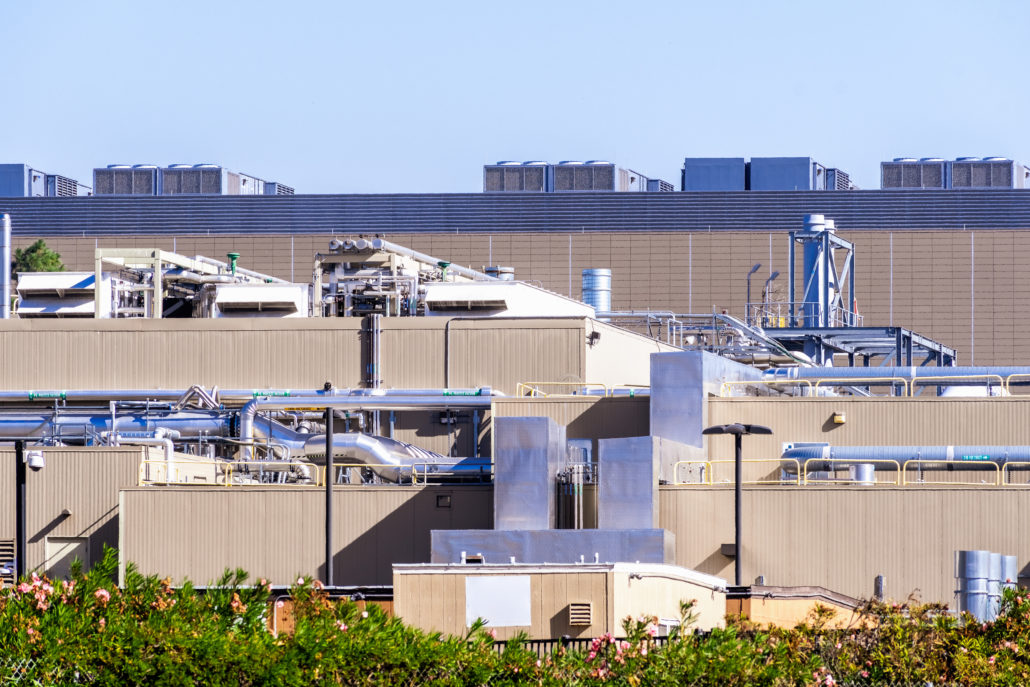
Getting a new data center operational becomes far more complex when a facility owner is faced with a noise attenuation issue that, if ignored, could result in fines, litigation and/or major delays in facility start-ups. That risk is heightened in North American jurisdictions such as Massachusetts and Ontario, where strict municipal and state/provincial noise ordinance legislation tends to be strictly enforced.
Limited real estate supply—coupled with the need for reliable fiber optic connections and redundant power infrastructure—is creating additional logistical challenges for developers, resulting in more data centers being situated closer to densely-populated residential areas. That’s particularly problematic in building retrofit situations where an existing facility is repurposed for use as a data center. In addition, the aforementioned pressure to take data-processing facilities operational as quickly as possible means that many firms will employ a rapid delivery model. The faster the engineering and build-out of a data center, the greater the chance that key design considerations will go overlooked. Thus, there is a growing trend of new data centers requiring often complex sound attenuation solutions. The adaptive design and seamless execution of these sound attenuation solutions is critical in aligning with new data center design and commissioning objectives.
Data center noise issues can be expansive in scope and complexity, and when a single component is producing excessive noise—an air handler, for example—there tends to be unwanted sound emissions across the facility’s entire mechanical system. In data centers, there could be dozens of air handlers helping to cool the facility, underscoring the enormity of the attenuation challenge. Put simply, these projects require a great deal of technical experience, planning and strategic coordination to execute successfully.
As such, our team always recommends an agile approach when executing on mission-critical projects. This means having the ability to adapt and respond to technical challenges directly linked to the implementation of mechanical noise control solutions. Addressing challenges associated with structural support, integration with mechanical equipment, and general site functionality are vital in the effective and efficient execution of data center noise control projects.
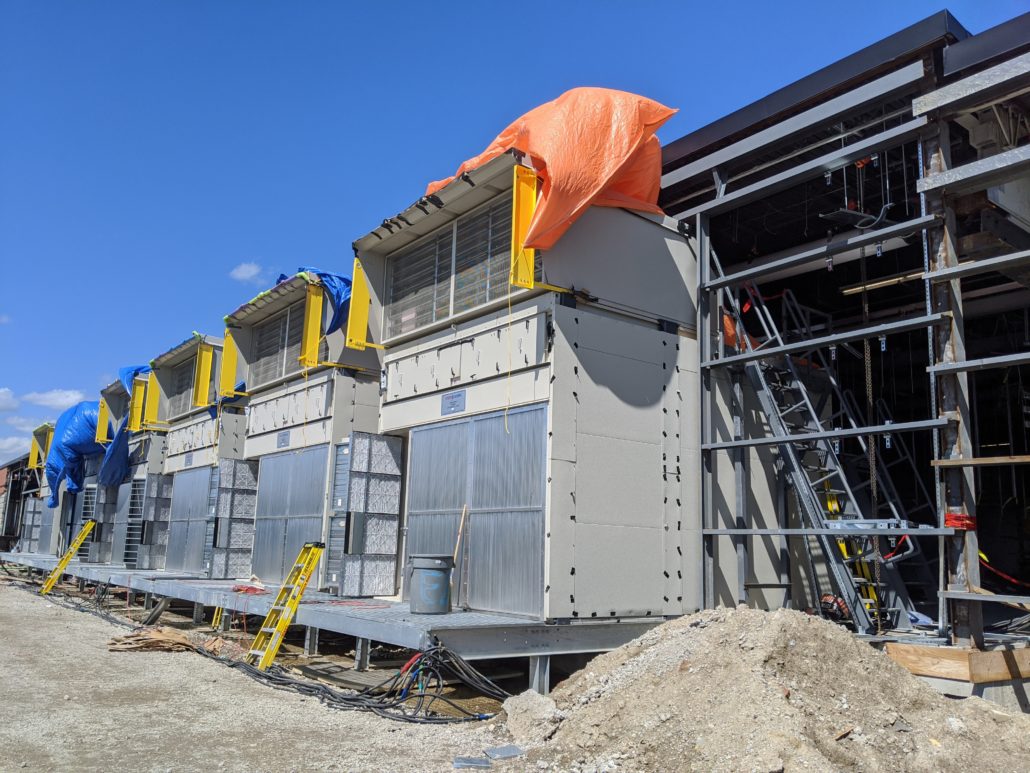
The challenge
It was in that context that our team was called in to attenuate a noise issue at a new Canadian-based data center located in a former factory building. The mission-critical facility design implemented the use of dozens of custom air handlers for facility cooling, some of which were creating non-compliant levels of exterior noise.
As a result, the facility owner was facing potential delays in facility start-up for breaching compliance with local regulatory limits for exterior noise emissions.
The owner’s engineer and construction team approached Parklane for help, but with an important caveat: We would need to do whatever we could to maintain the already compressed construction schedule throughout the mitigation process. Failure was not an option. With that in mind, we set out to work.
The solution
In one of our latest blogs we outline the many steps necessary to mitigate a complex noise challenge. We employed our full gamut of tools and techniques on this project.
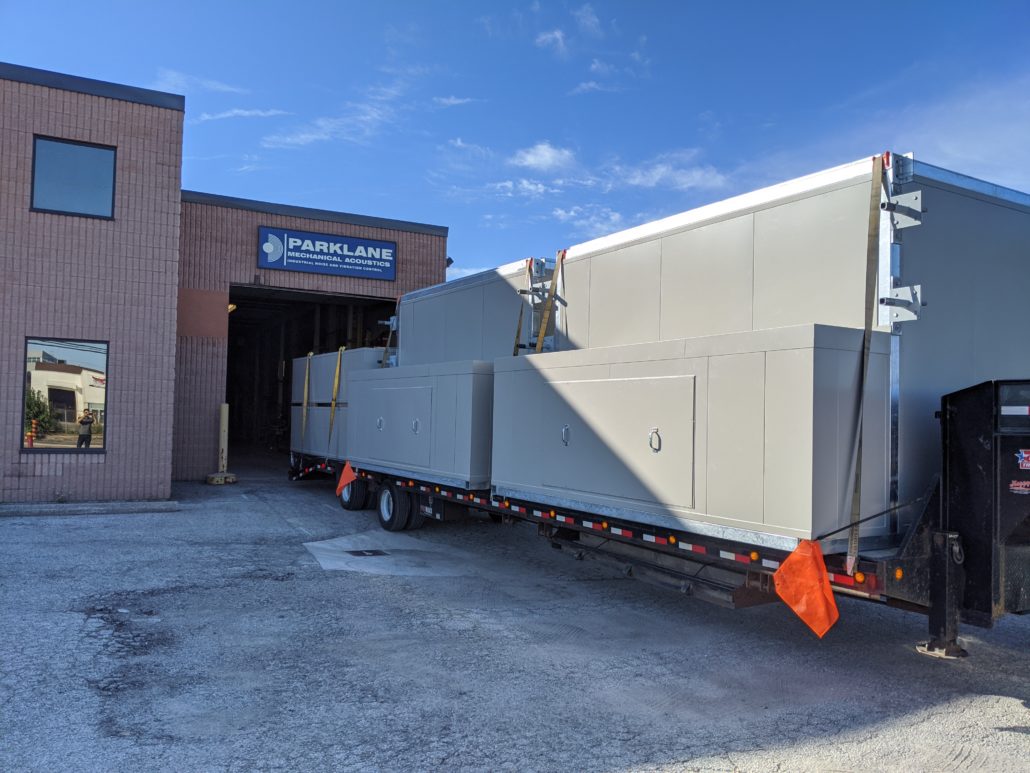
With a project team consisting of the owner’s construction/engineering team, Parklane’s engineering, design, fabrication and installation teams, along with a highly-experienced acoustic consultant, we were tasked with developing a strategy to mitigate the large custom air handlers in a short period of time—in this case by effectively integrating our solution to the facility’s air handling equipment. That meant factoring in everything from air dispersion challenges to spatial limitations (the exterior air handlers were tightly packed), along with various thermal, architectural, structural and mechanical issues that arose throughout the construction process.
We implemented a custom baffled plenum silencer solution to mitigate discharge air noise from the air handlers. Its design required close design collaboration with the equipment OEM to ensure the equipment’s function and serviceability was not jeopardized with the addition of our sound attenuation components. For example, the silencer needed to accommodate the AHU’s weather hood and modulating damper assembly. Parklane’s structural team also coordinated a low-profile structural solution that embedded into the body of the AHU to conserve space between the units. A final challenge was accommodating the positioning of the AHUs, which were situated partially inside the building and partially outside. The custom design incorporated an offset in the plenum section and baffled section to maintain airflow and maximize acoustic performance. Parklane then worked closely with the building envelope designer to ensure the delivered solution was watertight. All of these design elements were conceptualized by Parklane’s CAD team in both isolated components models and integration within the larger site BIM model.
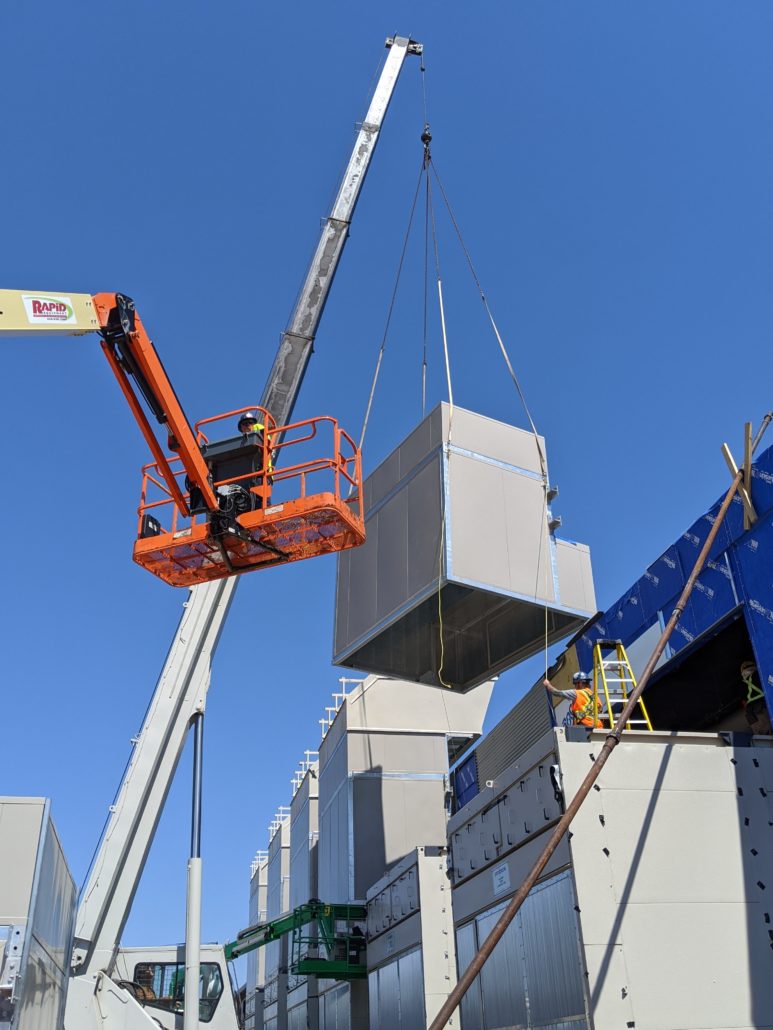
Once the design was complete, our agile engineering and trades expertise was called on to manage the project’s complicated installation logistics. Accomplishing the latter meant coordinating with the site-team of hundreds of contractors working on-site to avoid facility disruptions. And that was simply to install the silencers.
Managing the other mechanical and structural challenges that emerged, unrelated to noise control, was another matter altogether. For example, our team facilitated critical alterations to a structural racking system for cable trays that would accommodate additions to the facility’s electrical system. As the aforementioned thermal challenges emerged, our team provided temporary heat shields for a series of generator exhaust stacks to facilitate expedited commissioning. We also engineered, fabricated and installed an entire network of maintenance catwalks for the generator farm and managed a portion of the supply chain to acquire building envelope materials. The goal was to procure and ship material to the site faster through our network of suppliers, thereby avoiding construction delays.
The result
In the end, the air handler noise issue was attenuated within the specified performance parameters, and Parklane’s turnkey implementation process was successfully deployed to maintain the project’s critical path schedule. The Parklane Team also acted as an agile construction partner, playing a vital role in mitigating a myriad of on-the-fly technical challenges to help keep the project on track.
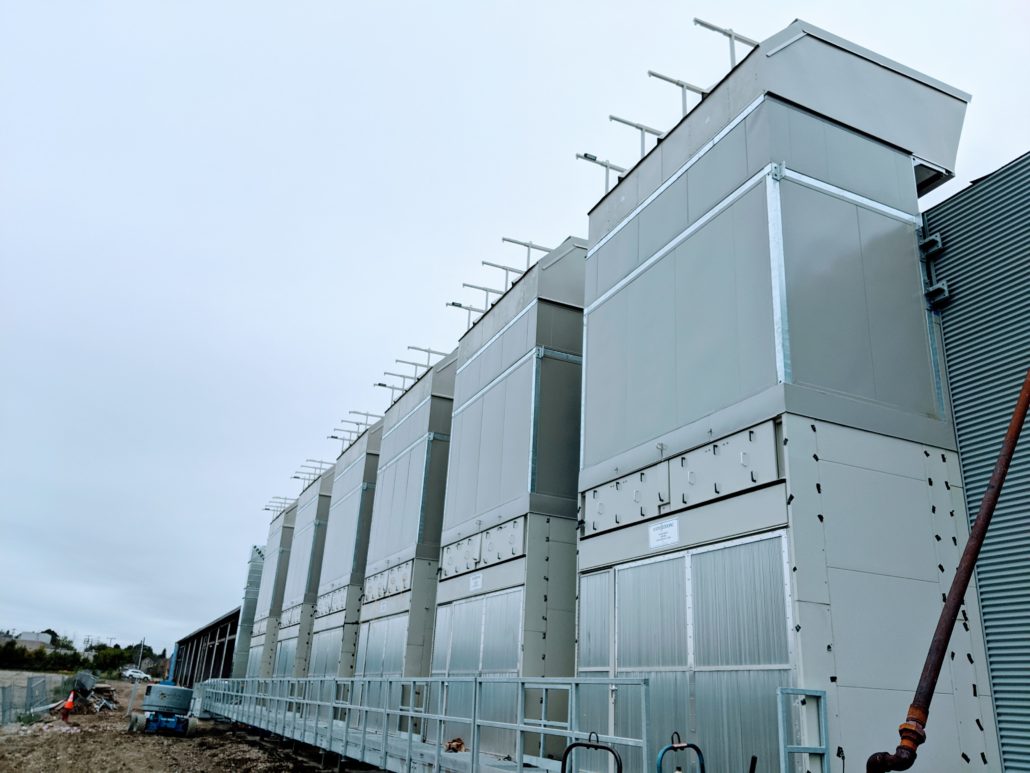
The project underscored the benefits of having a team of noise control specialists capable of assessing a complex set of problems and then implementing an effective solution using an agile and collaborative design methodology. Being nimble and adaptable delivered a successful outcome on a seemingly impossible mission-critical data center project.
For more Parklane success stories, visit our Case Study page.
